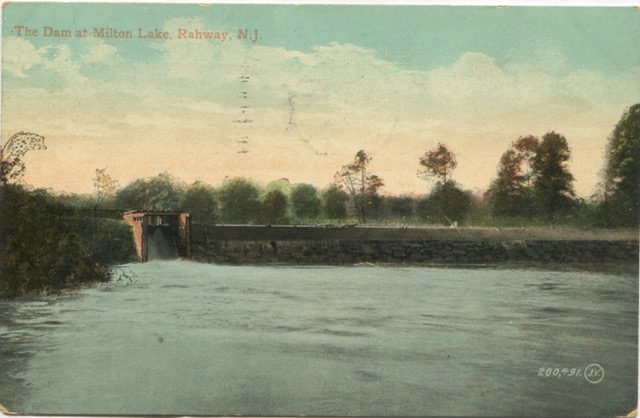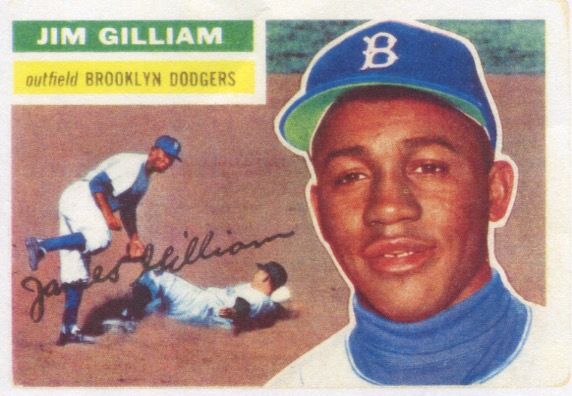
Interesting Bits from the Pages of Rahway History
Submitted by Al Shipley, City Historian and Rahway Library Research Consultant
Duck and Cover
“Operation Alert,” a nation-wide air raid test was staged on Wednesday, June 15, 1955. The test was administered to check the ability of local Civil Defense facilities to act during an atomic attack. The drill began with reports that an atomic bomb was “theoretically” being dropped on Elizabeth.
As soon as the sirens were sounded, all vehicular traffic was stopped and with few exceptions, all pedestrians left the streets to seek shelter. School children were directed to hide under their desks and high school students were led into interior hallways. The drill was reported to have been 90% effective.


Boys of summer in Rahway
Jim “Junior” Gilliam, a member of the Brooklyn and Los Angeles Dodgers from 1953-1966, lived on Thorn Street from 1953 until the team moved to California after the 1957 season. Gilliam was Rookie of the Year in 1953, played in seven World Series, was named to four All-Star teams, and was on ten National League Championship Dodger teams.
While living in Rahway, he and fellow teammates Don Newcombe, who resided in Colonia, and Joe Black, who lived in Plainfield, stayed in shape during the off season by working out at the Rahway YMCA.
Milton Lake becomes County Park
On November 15, 1936, Milton Lake and the surrounding area, a total of 38 acres, became part of the Union County Park system. The $113,000 transfer was part of the federal government’s Works Project Administration (WPA) parks project.
“Average American Family” lived here
In May of 1946, the family of Mr. and Mrs. William Gettler, whose home was on Monroe Street, was selected as the “Average American Family” by a popular British magazine, “Illustrated.” In a four-page article, the editors outlined for their English readers the special and unique American qualities and how the Gettler’s embodied them.
It was reported that the Rahway family was selected from 35 million families living in the United States.
Football Squad makes use of Forward Pass
On October 30, 1912, the Rahway High Football Team defeated Plainfield High 21-0 by using an innovative offensive strategy, the forward pass. All seven attempts made by the backs were completed.
The forward pass on the collegiate level goes back to1906, but at the time was considered controversial and was used infrequently and by few schools. The famous coach, Glenn Scobey “Pop” Warner improved the play over the next six years making it more attractive for more teams. Notre Dame and Knute Rockne employed the play for the first time during their 1913 season, one year after R.H.S. went to the air.
Funeral Trains Pass through Rahway
On April 25, 1865, the funeral cortege carrying the body of President Abraham Lincoln passed through Rahway at 8:25 a.m. as it traveled from Philadelphia to New York City. The procession started its journey in Washington D.C. on April 21and would travel through seven states before finally arriving in Springfield, Illinois on May 3. The train never exceeded 20 mph.
On Saturday, June 8, 1968, over 2,000 mourners gathered along the railroad tracks in Rahway as the train bearing the body of Robert F. Kennedy passed through the city. After a mass in St. Patrick’s Cathedral in New York City, the senator’s funeral train left Penn Station at 12:30 to start its journey to Washington, D.C.. Senator Kennedy was buried in Arlington Cemetery.
Last Civil War Soldier Passes
Rahway’s last Civil War veteran, Edmond Mays, died on June 9, 1936. Over 535 Rahway residents served during the bloody war. Mays served with the 8th New York Cavalry and saw action at Gettysburg and other important battles. He’s buried in Hazelwood Cemetery.
Free Vaccines to Combat Polio
Free Salk vaccine inoculations were administered to 1st and 2nd graders on June 22 and 23, 1955, in a program advanced by the National Foundation for Infantile Paralysis. Only youngsters whose parents had signed a request through their child’s school could receive an injection. A second free dose was scheduled for a later date. Over 1,150 children had filed permission forms.
Children older than 2nd graders were encouraged to see their family doctors for their shots. Cost of the inoculations ranged from $4.00 to $8.00.
